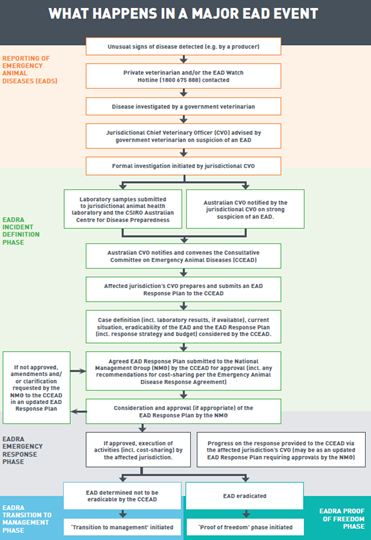Australia is currently free of both foot-and-mouth disease (FMD) and lumpy skin disease (LSD).
However, industry can never be too prepared when it comes to responding and protecting Australian livestock from exotic animal disease.
Thankfully, Australia has a range of detailed response plans and arrangements in place in the event of an incursion of either FMD or LSD into our country. These plans are rehearsed regularly and are continuously reviewed by both government and industry representatives.
AUSVETPLAN
The Australian Veterinary Plan (AUSVETPLAN) forms a key part of the national response arrangements in place for both FMD and LSD. The AUSVETPLAN is a series of manuals that sets out the agreed national policy and guidelines for agencies and organisations involved in a response to emergency animal disease (EAD) incidents in Australia.
There are 60 AUSVETPLAN manuals for 60 different animal diseases, including FMD and LSD.
The AUSVETPLAN manuals on FMD and LSD cover key information around managing each disease, including:
- the incubation period, transmission and resistance to each disease
- disease diagnosis
- control and eradication policies
- vaccination strategies
- recommended quarantine and movement controls, such as national livestock standstills.
Like all AUSVETPLAN manuals, these manuals are publicly available online and industry is encouraged to access them. View the FMD AUSVETPLAN or the LSD AUSVETPLAN documents now.
EADRA
Another arrangement Australia has in place is the Emergency Animal Disease Response Agreement (EADRA).
The EADRA guides how the state and federal governments work together with livestock industry groups to reduce the risk of disease incursions and manage the response to any disease incursions.
This agreement enables industry and government to respond quickly and effectively to an EAD incident, as well as providing certainty over management and funding for disease response.
Here is the EADRA’s step-by-step guide to what will happen in the event of an emergency animal disease (EAD) incident:









